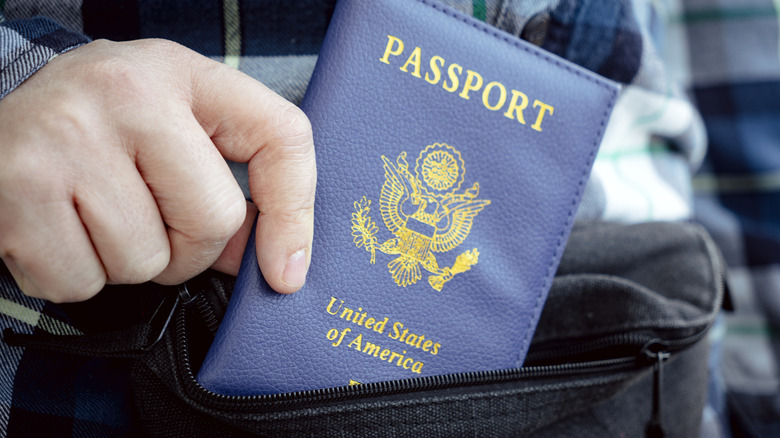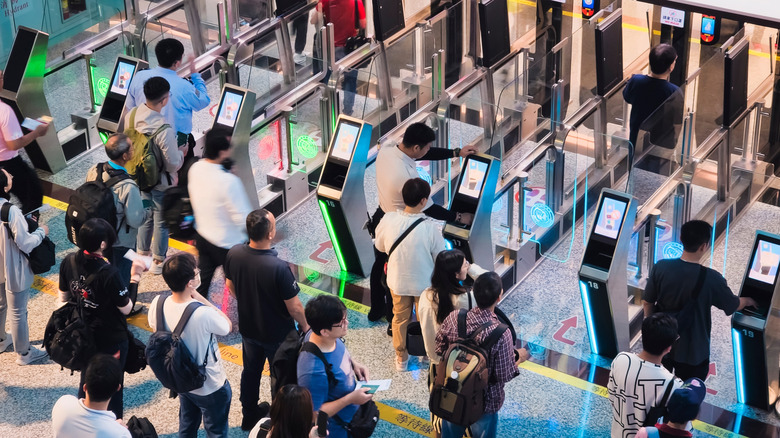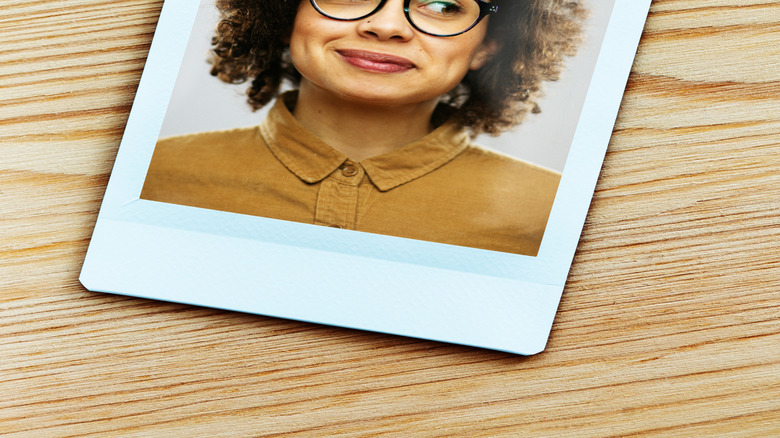The Unexpected Reason You're Not Allowed To Smile With Teeth For Your Passport Photo
If you've ever had to renew your passport (now is the perfect time to renew if your expiration date is coming up, by the way), you probably know the drill: No wide, toothy smiles allowed in your photo. In fact, whether you're at the post office or drugstore getting your official photo taken — or you're opting to DIY the whole thing — you'll likely receive the same instruction to maintain a neutral expression.
And while this seemingly arbitrary rule has frustrated travelers who want to look their best for years, there's actually a pretty straightforward answer for why you need to look so neutral in your passport. Simply put, the whole no-big-smiles-allowed requirement is less about government bureaucracy or outdated traditions and more about modern technology. As border security evolves, countries have had to implement some pretty sophisticated systems to accurately verify travelers' identities.
As a result, these technological advancements — which include facial recognition software — have led to a series of very specific requirements of what's allowed and what isn't in terms of passport photos. The infamous "neutral expression" is just one of them.
Computers can't recognize you if you're smiling
Unlike humans — who can easily recognize friends and family whether they're smiling, frowning, or crying — algorithms struggle with even the slightest change in facial features. That said, when you arrive at border control, computers need to be able to quickly and accurately match your passport photo (2D) to your face (3D) by measuring specific points on your face. This includes things like precisely calculating the distance between your pupils, the width of your mouth, and even the space between your ears. And a smile that shows teeth can change these measurements dramatically.
In some cases, something as simple as a wide grin can alter your entire face shape, making it harder for the software to successfully match your IRL features to your passport photo. To make matters more complicated, along with these measurements, border security systems also need to verify additional biometric details like your eye color and face shape, some of which can become distorted or unclear as your facial expressions change. Ultimately, and since facial recognition technology requires consistency to function properly, a neutral look (with, potentially, just a slight turn at the corner of your lips) that involves keeping both eyes open and your mouth closed is the best way to go.
Other can't-do's when taking a passport photo
Getting your passport photo right involves more than just keeping a straight face. And while the no-smiling rule might be one of the most well-known requirements out there, there's actually a whole list of specifications by the State Department that you need to follow in order to ensure your picture meets the requirements.
For starters, there are the things you'll want to avoid wearing when taking a passport photo. This includes sunglasses, hats, scarves, and head coverings (except for religious attire worn daily). Even if you wear glasses every day, you'll need to remove them for your photo to ensure border security systems can properly scan your face.
Additionally, no matter how long you've been dreaming of taking the perfect passport photo, you're also going to want to skip out on using any editing software or filters — which means those blemishes, stray hairs, or dark circles need to be left untouched. Along with that, your passport photo also can't have any colored or textured backgrounds, blurriness, shadows, or angled poses. Oh, and no selfies are allowed! Either use a tripod or get someone else to take the picture for you.


